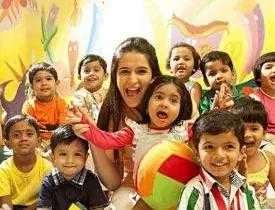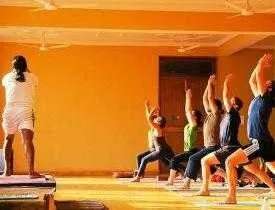Description
Course Name: Diploma in Yoga Science Teacher Training
Course Id: YSTT/Q001.
Education Qualification: 12th Class.
Duration: 370 Hrs.
How You will Get Diploma Certificate:
Step 1- Select your Course for Certification.
Step 2- Click on Enroll Now.
Step 3- Proceed to Enroll Now.
Step 4- Fill Your Billing Details and Proceed to Pay.
Step 5- You Will be Redirected to Payment Gateway, Pay Course and Exam Fee by Following Options.
Card(Debit/Credit), Wallet, Paytm, Net banking, UPI and Google pay.
Step 6- After Payment You will receive Study Material on your email id.
Step 7- After Completion of Course Study give Online Examination.
Step 8- After Online Examination you will get Diploma Certificate soft copy(Scan Copy) and Hard Copy(Original With Seal and Sign).
Step 9- After Certification you will receive Prospect Job Opportunities as per your Interest Area.
Online Examination Detail:
- Duration- 120 minutes.
- No. of Questions- 60. (Multiple Choice Questions).
- 10 Questions from each module, each carry 10 marks.
- Maximum Marks- 600, Passing Marks- 40%.
- There is no negative marking in this module.
| How Students will be Graded: | ||
| S.No. | Marks | Grade |
| 1 | 91-100 | O (Outstanding) |
| 2 | 81-90 | A (Excellent) |
| 3 | 71-80 | A (Very Good) |
| 4 | 61-70 | B (Good) |
| 5 | 51-60 | C (Average) |
| 6 | 41-50 | P (Pass) |
| 7 | 0-40 | F (Fail) |
Benefits of Certification:
- Government Authorized Assessment Agency Certification.
- Certificate Valid for Lifetime.
- Lifetime Verification of Certificate.
- Free Job Assistance as per your Interest Area.
Syllabus
Diploma in Yoga Science Teacher Training
Fundamentals of Yoga
Proper Exercise (Asanas), Proper Breathing (Pranayama), Proper Relaxation (Savasana) Proper Diet and Nutrition Positive Thinking and Meditation Developed during the 12th century, the practises of Hatha Yoga, involves the use of some amount of force in practising various asana. Hatha Yoga is widely practised in the western countries and is one of the most popular forms of yogic practises followed by people all around the world. This form of yoga is all about the liberation of the mind and attainment of wisdom through yogic practises This is traditionally regarded as “classical yoga” and aims to teach the yogi the principals of gaining control over mind and emotions Widely based on the teachings of Bhagavad Gita.
Principles of Raj Yoga & Hatha Yoga
Ahimsa – Non-Violence Ahimsa means not to cause pain or harm to any living being by thought, word or deed Satya – Truthfulness Asteya – Non-Stealing Brahmacharya – Pure Way of Life Aparigraha – Non-Accumulation of Possessions Raja means King. A king acts with independence, self-confidence and assurance. Likewise, a Raja Yogi is autonomous, independent and fearless. Raja Yoga is the path of self-discipline and practice Raja Yoga is also known as Ashtanga Yoga (Eight Steps of Yoga), because it is organised in eight parts Non-Violence Truthfulness Non-Stealing Pure Way of Life Non-Accumulation of Possessions Purity Contentment Self-Control.
Anatomy, Physiology & Related Disorders
Meaning and definitions of Yoga, concepts and misconceptions of Yoga Historical background of Yoga. Schools of Yoga [central ideas only] Jnyana yoga, Karmayoga, Bhakti yoga, Hatha yoga, Mantra yoga, Laya yoga, Yoga and Culture Meaning and Definitions of culture, concept of culture, difference between civilization and culture Indian culture : Characteristics of Indian culture Yoga and Religion Meaning and concept of Religion. Necessity of religion for society Teachings of various religious thoughts and their similarities Yoga and Humanitarianism Man as a human being, duties of human being, Achievement of the goals humanitarianism by Yoga Yoga and Mysticism Meaning and definition of Mysticism.
Hygiene, Diet & Naturopathy
Patanjala Yoga Sutra, Definition of Yoga, different Vrittis and their control. Four fold nature of Chitta, importance of ‘Abhyasa’ and ‘Vairagya Concept of Ishwar, Concept of Samprajnyata and Anya (Vitarka, Vichar, Anand and Asmita), Concept of Sabij and Nirbij Samadhi, Kriya Yoga – Tap, Swadhyaya and Inshwarpranidhana. Punch ‘Klesh’ and their types. Nine ‘Antaraya’ (Vyadhi, Styan, Samshaya, Pramad, Alasya, Avirati, Bhrantimatva, Aldhabhumikatva, Anavastitva.) And their remedies Five ‘Sahabhuva’ (Dukha, Daurmanasya, Angamejayatva, Swas and Praswas) their remedies Concept of ‘Drushya’, ‘Drushra’ and Rytambharaprajnya .
Acupressure, Pranic Healing & Marma Therapy
Ruls of diet- mitahar, pathya, apathy, Description of Asanas and Pranayama Concept of cleansing processes [ Shatkarma ], Concept of Bandha and Mudra, Concept of Kundalini and Shatchakra. Processes of Kundalini jagran, Concept of Nadanusandhan and types of Nada Patanjal, Yoga Sutra, Yoga Dipika Hathapradipika, Gheranda, Samhita Asana Pranayama, Ashtanga Yoga, Darpan, Patanjal Yoga Sutra, Yoga Darshan, Speaking Yoga, Meaning of Method, Criteria of good method, prerequisites for good teaching, principles of teaching, maxims of teaching.
Human Consciousness & Yoga Therapy
Teaching methods for Yogic practices, Principles of Education, Principles of Methods of Teaching, and Introduction to Teaching Educational Technology, Introduction of cell and tissue & its structure and function. Scope of Anatomy, physiology and its descriptive terms and interpretations Blood – composition and function, – Classification of blood cells and plasma Formation, function and rate of RBC, WBC and platelets Blood groups – A, B, AB, O and RH grouping, blood coagulation. Heart structure and function and types of circulation: Systemic and Pulmonary Organs of Digestive and Respiratory system and its structure and function.







